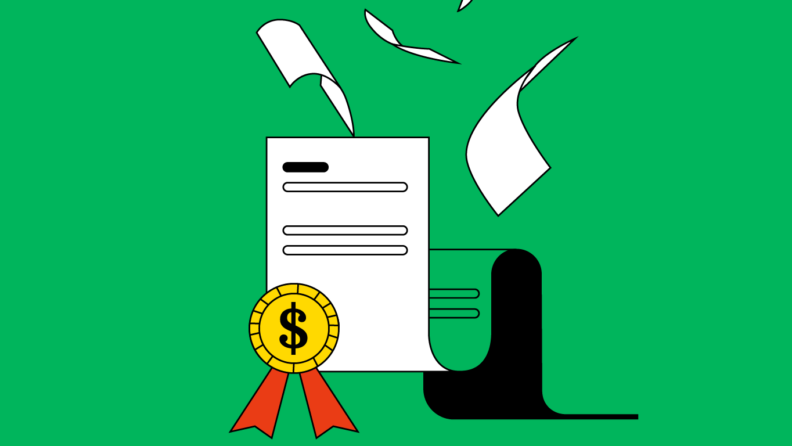Pricing varies based on features like automation, workflows, and the service support team you choose, so compare these elements to find what fits your sales teams best.
Upfront cost doesn’t show the full picture; watch for add-ons like extra storage, apps, or premium customer support that increase total spend.
Focus on ROI and scalability. Choose a CRM solution that can streamline your sales processes, scale with small businesses, and adapt to startups and enterprises alike.
A CRM (Customer Relationship Management) system is software that centralizes customer data, tracks interactions, and helps manage the entire sales pipeline. It’s vital for CROs because it provides the visibility, analytics, and automation needed to align teams, optimize sales processes, and drive predictable revenue growth.
CRM providers are the companies that develop and deliver CRM platforms, offering the tools and support CROs need to manage customer data, streamline sales processes, and scale revenue operations effectively. Many CRM providers don’t list prices, adding to the confusion.
In this guide, I’ll break down typical costs, CRM pricing models, and possible hidden fees. I’ll also give you tips on evaluating ROI so you can make informed decisions.
What Factors Influence CRM Pricing?
When you're choosing CRM software, factors like the number of users, features, and onboarding fees can make all the difference. Here’s a breakdown:
| Factor | How It Affects Pricing |
| Seats Included | The number of users can increase costs, with each extra seat adding $10–$50/month. |
| Pipeline Stages | More sales pipeline stages may require higher tiers, adding $20–$100/month. |
| Reporting Features | Advanced analytics, dashboard, or sales forecasting features often add $20–$50/month.. |
| Customization | Tailoring with custom data, permissions, or workflow automation may add $500–$2000 in setup fees. |
| Support Level | Premium technical support or 24/7 support team access can add $50–$200/month. |
Understanding Pricing Models
When choosing CRM pricing, it's important to understand the pricing models available. These models, like per-user or custom quotes, differ from the overall cost and can impact your budget. Let’s explore the various models you might encounter:
| Pricing Model | How It Works | What to Watch For |
| Per user/seat | Charges based on the number of users or seats | Costs can quickly add up as your sales teams expand |
| Per usage | Fees tied to sales cycle volume or sales forecasting features | Heavy usage might lead to unexpected expenses |
| Tiered subscription | Starter vs. Pro vs. Enterprise. Check functionality and marketing automation access. | Ensure the tier you choose includes all necessary features |
| Custom quote | Tailored to your specific needs; negotiation required. | Monthly billing is flexible; a yearly subscription is often cheaper, but a bigger credit card commitment |
| Pay-as-you-go or annual | Monthly billing is flexible; a yearly subscription is often cheaper, but it requires a bigger credit card commitment | Be aware of the commitment and potential savings from annual payments |
Typical Pricing by Company Size
CRM pricing scales with company size, affecting budget planning and feature access. Understanding how costs differ by size helps you choose what's best for your team:
| Company Size | Typical Price Range | What’s Usually Included | Common Use Cases & Vendors |
| Small businesses | $20–$100/month | AI-powered analytics, pipeline management, project management, and premium customer experience, too | Simple sales tracking, Zoho CRM, HubSpot, Freshsales |
| Mid-size business | $100–$500/month | Apps, forecasting, moderate customer support | Growing sales teams, Salesforce, Pipedrive, Insightly |
| Large business | $500–$1000/month | AI-powered analytics, pipeline management, project management, and premium customer experience too | Complex sales processes, Microsoft Dynamics, SugarCRM, NetSuite |
| Enterprise | $1000+/month | Custom all-in-one CRM software, end-to-end integrations, advanced authentication | Enterprise-level management, Oracle CRM, SAP, Salesforce Enterprise |
Hidden & Add-On Costs to Watch For
When deciding on CRM pricing, hidden costs can sneak up on you, impacting your budget more than expected. Onboarding fees, for instance, might catch you off guard, and premium support can add unexpected monthly expenses.
And while you're accounting for hidden CRM costs, you should also ask: how much does contract management software cost? Because if your contract tool must integrate with your CRM, those licensing and integration costs should be included in your total budget.
Here’s what to look out for:
| Hidden/Add-On Cost | Description |
| Onboarding/setup fees | Initial setup can cost extra, with some vendors like Salesforce charging fees for system configuration and data import. |
| Training or certifications | Ongoing training might require payment, as seen with HubSpot's certification programs, which can add to your total cost. |
| Premium customer support | Faster response from the support team often means extra charges, with vendors like Zoho CRM offering paid tiers. |
| Integrations beyond the standard set Extra apps/mobile apps | Adding integrations not included in the basic package can incur additional fees, as experienced with Microsoft Dynamics' extensive integration options. For social media, mass emails, or webforms |
| Usage overages | Extra notifications, API calls, or follow-ups (a common occurrence with vendors like Pipedrive). |
| Contract minimums | Lock-ins that hurt startups or nonprofits. Some vendors, like SAP, require contract minimums, binding you to a certain spend level, which might not suit your changing needs. |
| Compliance or legal updates | Staying compliant with industry regulations may require updates, and some vendors charge for this, as seen with Oracle CRM's compliance-related enhancements. |
Types of CRM Pricing: Subscription Plans & Upgrade Triggers
CRM pricing often follows a subscription model with tiered plans, each offering different features and limits:
- Plan Inclusions: Basic = contacts + email marketing. Pro/Enterprise = marketing automation, workflow automation, sales forecasting, and customer journeys. HubSpot and Zoho CRM are transparent about their tiered offerings.
- Upgrade Triggers: More apps, number of users, or advanced pipeline management. Salesforce often requires upgrades for deeper functionality. User limits, feature access, or integration caps often dictate when you need to upgrade. Salesforce, for example, requires you to upgrade for more advanced reporting and automation.
- Annual vs Monthly Billing: Monthly billing offers flexibility; yearly subscriptions lock in savings. Insightly and Pipedrive provide clear pricing details with annual savings.
- Transparency: Vendors like Zoho CRM and HubSpot are open with their pricing plans, while others require negotiation.
To avoid overspending, evaluate your team's needs against the features offered in each plan. Align your choice with your current requirements to prevent unnecessary upgrades.
Maximizing ROI from Your CRM Pricing Investment
ROI should guide your CRM buying decisions since tracking it helps ensure your investment pays off over time. You need to weigh the pros and cons of a CRM and make an informed choice. Here's how:
Time Saved
Automation and workflows reduce manual sales processes. Consider what manual processes this CRM will replace and how much time your team could save. Ask vendors to demonstrate these time-saving features in a typical use case. This evaluation helps you measure potential productivity gains and justify the investment.
Error Reduction
Better permissions and validation controls. Reducing manual handoffs or calculations with a CRM can minimize costly mistakes. Identify where errors occur now and how this system could reduce them. Ask vendors to show how data validation and control work across the platform. This insight helps you determine the CRM's impact on accuracy and reliability.
Compliance Avoidance
Built-in audit and authentication features. CRM features that align with legal, financial, or industry standards can reduce the risk of fines or audits. Inquire about the compliance features built into the platform and whether it supports your specific industry requirements. Request examples of how the CRM has helped avoid compliance gaps. Understanding this aspect ensures your system meets necessary regulations.
Cross-Team Adoption or Consolidation
Replace siloed apps with an all-in-one CRM solution. Evaluate whether this tool could replace others and which teams would realistically use it. Ask vendors for stories of successful rollouts across functions. This helps you assess the CRM's potential to unify processes and reduce expenses.
Questions to Ask Vendors During Pricing Demos
Demos are your team's best chance to clarify pricing, explore what's included, and avoid unexpected costs. Come prepared with questions to ensure you understand every aspect of the deal, and consider drafting a CRM pricing RFP to cover all bases. Here are key questions to ask:
- How are pricing plans structured, and what’s the CRM cost per seat?
- Do you support marketing automation, notifications, and workflow automation?
- What’s the functionality difference between tiers?
- Are there usage caps, and what happens if we exceed them?
- What onboarding fees are included, and how are they billed?
- Can I pay via credit card, PayPal, or invoice?
- Do you offer nonprofit or startup discounts?
- Do you integrate with Salesforce, Zoho CRM, or other CRM software?
- Can you share case studies or frequently asked questions from similar buyers?
- Can we choose between monthly and annual billing, and are there renewal terms?
- How do you handle billing for additional users or features mid-contract?
- Are there any hidden fees we should be aware of?
Tips for Negotiating CRM Pricing
Pricing can often be flexible, and being well-prepared gives you an edge in securing better deals. Strong negotiation tactics can help your team achieve favorable pricing and contract terms while maintaining necessary functionality. Here are some tips to guide your negotiation process:
- Benchmark Competitors: Compare CRM pricing across vendors like Zoho CRM, HubSpot, and Salesforce. Use this information to negotiate with vendors, showing them you know the market rates.
- Discount Opportunities: Ask about deals for nonprofits, startups, or annual commitments. Some vendors offer special rates to gain loyalty, which can cut costs significantly.
- Pilot Programs: Test apps/workflows before committing to a paid plan. This approach can sometimes lead to reduced rates during the trial period.
- Renewal and Lock-In Clauses: Avoid long lock-ins; reassess at each sales cycle. Ensure you have the flexibility to reassess your needs and renegotiate terms before the contract renews.
- Group Buying: Leverage procurement to reduce CRM cost. Joining forces with other departments or companies can increase your buying power and lead to better pricing offers.
What’s Next
If you're researching CRM pricing, connect with a SoftwareSelect advisor for free recommendations.
You fill out a form and have a quick chat where they get into the specifics of your needs. You’ll get:
- A shortlist of the best CRM options tailored to your sales processes.
- Help comparing CRM cost, CRM pricing plans, and CRM pricing tiers.
- Guidance on integrating with apps, Zoho CRM, or Salesforce.
- Full support through the onboarding, negotiation, and rollout process.


